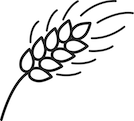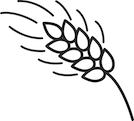Youth Suicide Prevention and Intervention Best Practices and Policy Implications (7 credit hours)
Program Summary: This course examines youth suicide prevention and intervention in five parts: 1. Foundations of Youth Suicide Prevention 2. Suicide Prevention and Postvention in School Settings 3. Suicide Specific Interventions 4. Cultural Considerations and Specific Populations and 5. Improving Quality of Suicide Care Across Systems. The course explores trends and research and offers strategies for prevention, early identification, and response. Suicide screening, safety planning, lethal means counseling, hotlines, and best practices are discussed. Cultural considerations highlight specific populations that include Black youth, LGBTQIA+ youth, youth with intellectual and neurodevelopmental disorders, American Indian and Alaska Native youth, and considerations for rural communities. Views from lived experience are shared.
This course is recommended for social workers and is appropriate for beginning and intermediate levels of practice.
Reading : Youth Suicide Prevention and Intervention Best Practices and Policy Implications Editors: John P. Ackerman, Center for Suicide Prevention and Research and Lisa M. Horowitz, NIMH Publisher: Springer Briefs in Psychology; Advances in Child and Family Policy and Practice
Course Objectives: To enhance professional practice, values, skills and knowledge by exploring youth suicide prevention and intervention.
Learning Objectives: Identify recommendations and best practices for youth suicide prevention, early identification, and response. Describe suicide specific interventions. Describe cultural considerations that impact risk and protective factors.
Review our pre-reading study guide.
G.M. Rydberg-Cox, MSW, LSCSW is the Continuing Education Director at Free State Social Work and responsible for the development of this course. She received her Masters of Social Work in 1996 from the Jane Addams School of Social Work at the University of Illinois-Chicago and she has over 20 years of experience. She has lived and worked as a social worker in Chicago, Boston, and Kansas City. She has practiced for many years in the area of hospital/medical social work. The reading materials for this course were developed by another organization.





